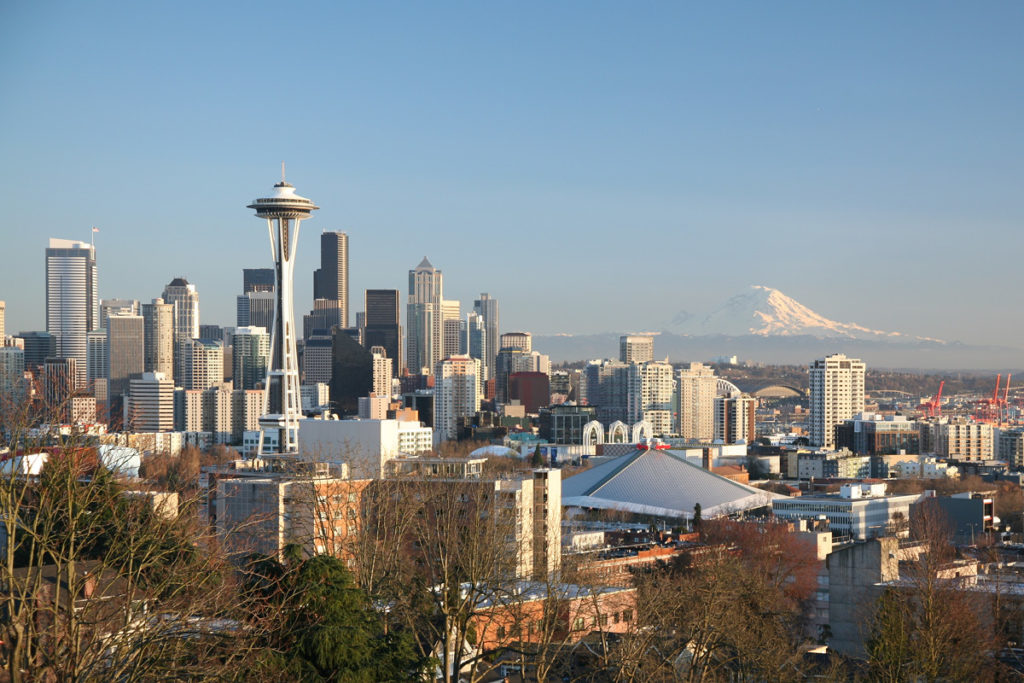
Common Tree Diseases in the Seattle Area
Keeping a watchful eye on tree wellness is crucial to preventing damage from common tree diseases in the Seattle area. What symptoms should you be on the lookout for in your Seattle, Bellevue, Kirkland, Redmond, Kent, Edmonds, or Bothell property’s trees?

Annosus Root Disease
Annosus root disease is fungal, spreading through the air and infected soil and roots, where it can survive for several decades. It’s common in conifers, causing root and butt decay. Infected trees have thin, pale foliage, reduced height, decreased lateral branch growth, and thinning crowns. Conks, the cream-colored fruiting bodies of the fungus, may be found on infected trees’ roots.
As roots die, tree health declines, predisposing them to secondary infection by bark beetles, which can quickly kill weakened trees. You may find small, scattered groups of dead trees near large, old stumps. Areas with logging histories suffer a higher incidence and severity of infections but aren’t the only ones at risk. You may find Annosus root disease on all western conifers, but it favors:
- True firs
- Hemlocks, especially western and mountain species
- Pines
- Redwood
- Sequoia
- Incense-cedar
Hemlock Dwarf Mistletoe
This small parasitic plant requires a living conifer host and affects many native Seattle tree species. As mistletoe seeds germinate and grow, roots imbed in the wood of host trees, beginning with a slight swelling. After a couple of years, shoots emerge, followed by male or female flowers, and later, fall fruit. Fruiting berries eventually explode, spreading the parasitic plant’s seed. As swollen, infected branches multiply and aerial mistletoe shoots grow, infected limbs from densely branched structures cause “witches’ brooms” that can weigh from a few pounds to several hundred, and these bundles can fuel wildfires. Hemlock dwarf mistletoe diverts tree resources over time, stunting tree growth and causing top kill and ultimately death with severe infections. Host trees include:
- Western hemlock
- Mountain hemlock
- Noble fir
- Subalpine fir
- Pacific silver fir
- Shore pine

Swiss Needle Cast
Swiss needle cast is another common fungal disease in the Seattle area. SNC causes needles to cast or shed prematurely. Since the 90s, it has affected hundreds of thousands of acres of Douglas firs throughout Washington and surrounding coastal regions, causing one of the largest foliage disease epidemics in North America. SNC is found on the older needles of nearly all Douglas fir trees, showing parallel rows of brown-black spots on the underside of needles. It rarely results in death, but with severe infections, it causes reduced growth, dieback on needle tips resembling drought damage, and thin, yellow-brown discolored crowns. Climate and environmental factors, including mild temperatures and wet conditions, worsen symptoms and spread.
Seattle Tree Disease Treatment
If your trees show signs of these common diseases, our experienced Seattle arborists can help. We have the skills to identify and treat major tree diseases quickly. Safeguard the value of your property, keeping your trees looking beautiful and healthy with prompt attention from our trained team.
Win the fight against common tree diseases in the Seattle area. Contact Arborwell Professional Tree Management at to request an arborist evaluation for your trees today.